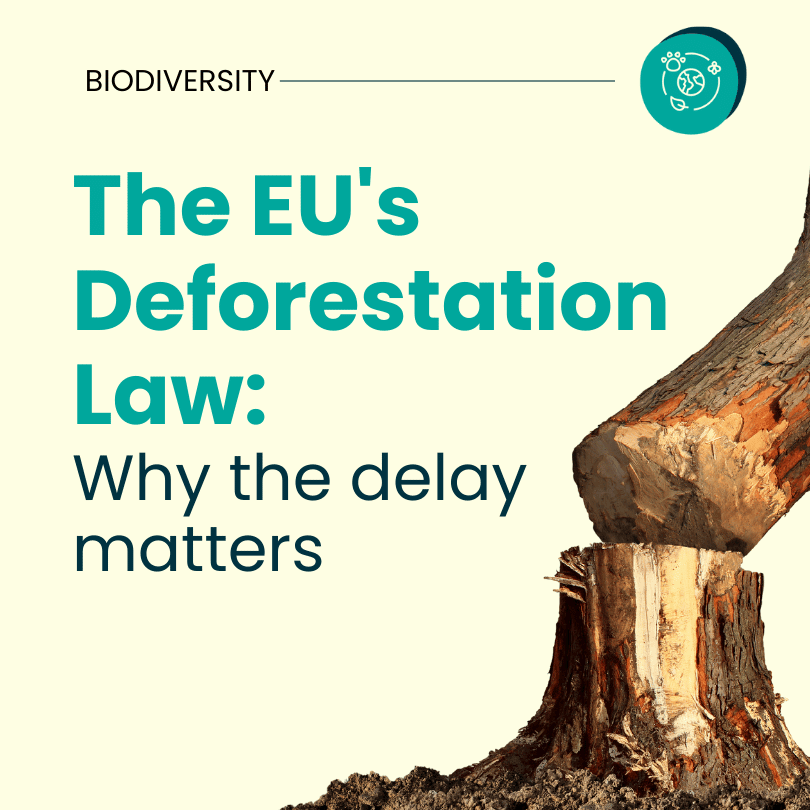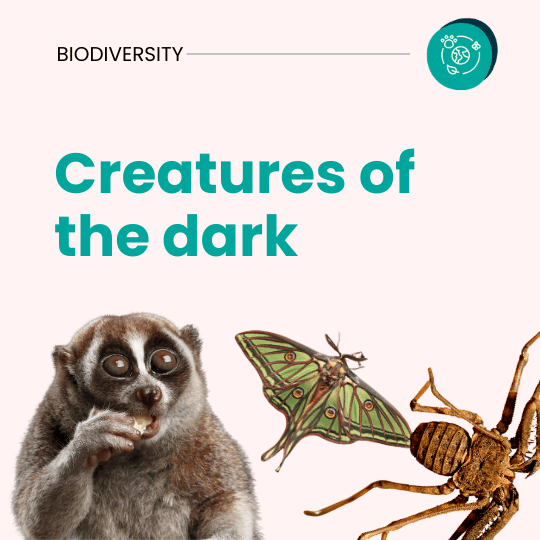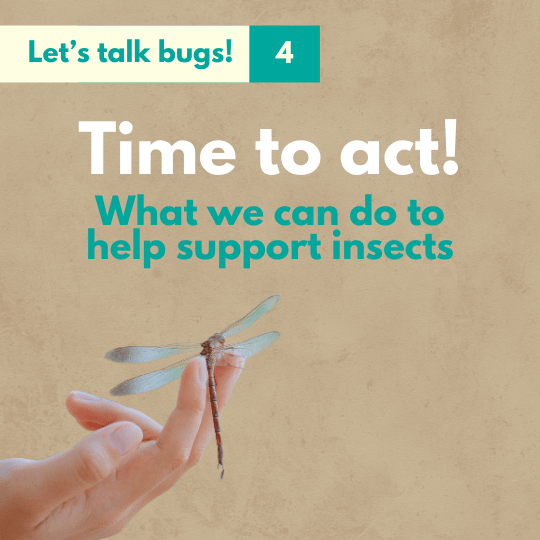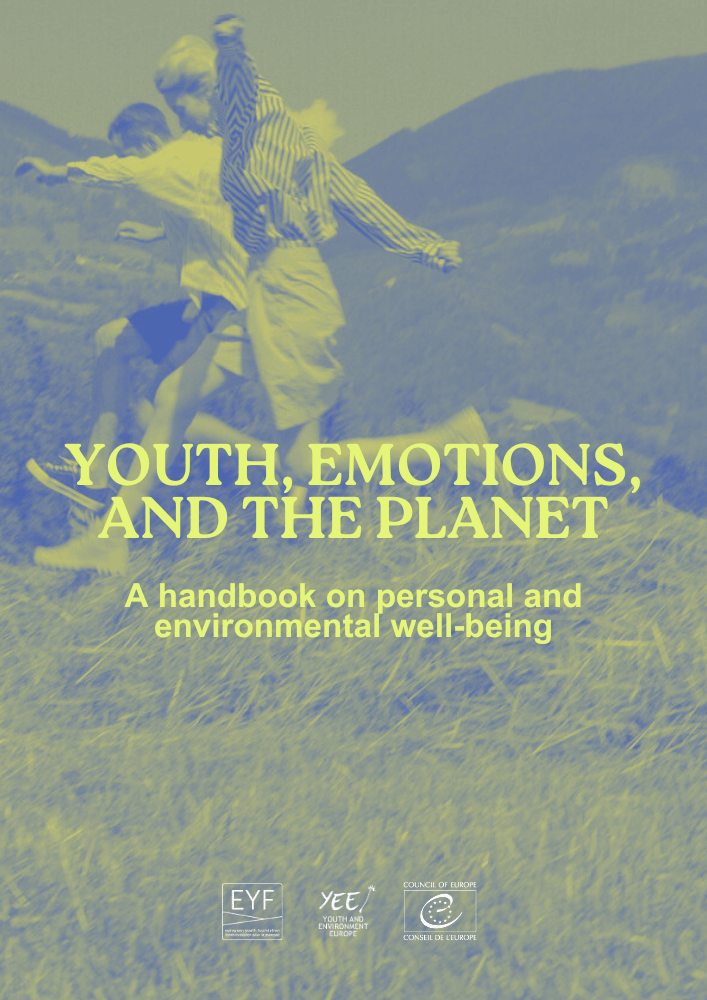
Inclusive language in the environmental movement
Share This Handbook
In our collective journey towards addressing the urgent challenges of climate change and safeguarding the environment for future generations, the significance of language cannot be overstated. Language shapes our perceptions, influences our actions, and reflects our values. It is not merely a tool of communication but a powerful instrument for fostering understanding, empathy, and inclusivity.
This handbook covers a wide range of topics, including:
-
The impact of language on perceptions of climate change
-
How can you overcome barriers to inclusive language
-
How to ensure inclusive (intercultural) communication
Inclusive language in the environmental movement
https://yeenet.eu/wp-content/uploads/2024/12/Inclusive-language.png 353 353 Eva Kloudová https://yeenet.eu/wp-content/uploads/2018/11/logo-yee-728x1030.png Eva Kloudová2024-12-13 15:55:342024-12-17 07:10:31Inclusive language in the environmental movementWhat does inclusivity in communication really mean for organisations?
#VoiceItRight

Our main beneficiaries often only speak their local language
UNITING BRIDGE
By endorsing the Rhodopean dialect, we send a clear message: no one should be excluded or judged for the way they express themselves.
Young Improvers for Youth Development
POLITICS4HER
Politics4Her is an intersectional feminist youth-led NGO advocating for the inclusive participation of young women and girls in politics, civil society, and decision-making processes. Politics4Her is a movement driven by the belief that young women and girls hold the power to create a more equitable and just world. Their platform is a place where every girl and woman can be heard, valued, and recognised as an agent of change.
What is inclusive language to you?
Politics4Her Europe believes that inclusive language is one of the many tools society has to create an environment where everyone feels seen, respected, and acknowledged, no matter their identity, background, or experiences. Our inclusive language avoids terms that might reinforce stereotypes, biases, or discrimination, and instead uses vocabulary that embraces diversity.
What steps has your organisation taken to promote inclusivity in communication?
At Politics4Her, we’ve developed comprehensive guidelines that emphasise the use of inclusive language across all levels of communication, both internal and external. These guidelines include recommendations for gender-neutral language. Additionally, our communication strategy focuses on respecting cultural diversity and neurodivergent individuals. In our campaigns, we also include content warnings (TW) for topics like sexual violence or mental health, allowing our audience to emotionally prepare before engaging with potentially distressing content.
What best practices and communication approaches can you share with other NGOs?
At Politics4Her, we’ve learned that effective communication isn’t just about sharing information—it’s about creating an environment where everyone feels heard, respected, and understood.
Based on our experience, here are some easy-to-follow tips:
– Avoid making assumptions about the values and cultural traditions of the person or group you’re engaging with. Take the time to understand the communities you work with and adapt your communication methods to align with their values, beliefs, and traditions.
– Use accessible language that avoids jargon and complex concepts. When working with multilingual and multicultural teams, it’s important to ensure the message is understandable for everyone, including those with varying levels of literacy or education.
CAN EUROPE
CAN Europe is a regional node of Climate Action Network, the world’s largest environmental network with over 1,700 Non-Governmental Organisations (NGOs) active in more than 130 countries, driving collective and sustainable action to fight the climate crisis and to achieve social and racial justice by convening and coordinating civil society at the UN climate talks and other international fora.
What is inclusive language to you?
Inclusive language means using comprehensible words and expressions that embrace and include the diversity of all individuals, regardless of their gender, age, ethnicity, nationality, ability, religion, or any other characteristic. Using inclusive language in internal and external communications helps foster an environment free from stereotypes and assumptions and where individuals are able to participate fully. Our approach to inclusive language is rooted in principles of intersectionality, acknowledging how overlapping systems of oppression and discrimination shape individual experiences, and decoloniality, challenging colonial legacies in language and narratives.
Examples: Using inclusive language includes for example: avoiding unnecessary jargon, or abbreviations and acronyms, using clear and readable fonts, keeping sentences short and using open files, captions and accessible formats.
What steps has your organisation taken to promote inclusivity in communication?
A key example of how our commitment to inclusive language is reflected in our daily practices, is the ongoing development of an editorial style guide, which is designed to mainstream inclusive language throughout the organisation. The guide is also rooted in the mentioned principles of decoloniality and intersectionality, highlighting the importance of challenging colonial legacies in language, amplifying marginalised voices, and acknowledging the overlapping systems of oppression that shape individual experiences. This allows our approach to language to be not only inclusive but also transformative, contributing to a just and equitable transition where no one is left behind.
Can you share an example where language barriers impacted your ability to communicate with your audience?
Concretely, within the communications team we have drafted an action plan which includes a checklist on inclusive & intersectional communication. We aim to ensure that our content is accessible (using open files, captions, accessible formats). We also make sure to use inclusive images when communicating about climate, showing the realities of climate change in diverse communities. Finally, one of othe key areas of our communications strategy is to amplify marginalised voices and ensure that climate and energy policies are intersectional, inclusive and diverse.
How do you make complex environmental issues accessible to your audience?
We recognise that complex climate issues need to be communicated in a way that is accessible, engaging and actionable for our diverse audiences. Some in place strategies are the following: Simplifying without oversimplifying: We break down technical and policy-heavy topics into clear, concise messages while preserving the depth and nuance necessary to understand the issue. Tailor content for diverse formats: We recognise that our audiences might consume information differently, we try to adapt our content for various platforms, from detailed reports for policymakers to infographics, videos, and social media posts for broader audiences. We use short formats, avoid jargon and create graphics that make our content more attractive and easy to digest.
Our Instagram account is a good example of how we are trying to make our content more accessible, by using relatable language, real-life examples and adding a touch of humour or surprise.
Use of storytelling: We highlight human-centred narratives that make climate challenges and solutions relatable. We strive to make policies and processes relatable by highlighting local initiatives and success stories.
How do you ensure that the voices of marginalised communities are included?
Ensuring that the voices of marginalised communities are included is central to our work. One example is our collaboration with local members and partners to support coal-dependent communities in the Western Balkans during the transition to renewable energy. These communities often face significant economic and social challenges, making their perspectives critical to shaping fair and inclusive policies. We work closely with local organisations, such as environmental NGOs and grassroots groups. We also provide ongoing support to our local members, equipping them with resources and platforms to amplify these voices. Furthermore, we engage our members consistently, especially when promoting grassroots stories and highlighting local impacts.
Uniting Bridge
Uniting Bridge SNGO promotes non-formal education, cultural diversity, rural development, and youth inclusion, focusing on empowering vulnerable groups and creating opportunities for young people. It was inspired by the 2014 initiative “Come to Oshakan,” which highlighted the village’s natural and cultural assets while encouraging environmental awareness in rural communities. The organisation addresses social and economic barriers in the Aragatsotn region by implementing programmes and campaigns to challenge stereotypes and empower youth aged 14–30 across Armenia and beyond.
What is inclusive language to you?
The organisation’s working language at local programs is Armenian, which is unique in that the language doesn’t have gender distinctions. That said pronouns and grammatical forms are universal for all genders. We are committed to ensuring that the organisation avoids using labelling or discriminatory expressions since the region where the organisation is located is home to communities of ethnic minorities. Additionally, the organization is currently implementing programs with displaced youth, and is important to extinct discriminatory language about them. Overall, by working with marginalised groups of youth, one of the organisation’s strategic goals is to create opportunities for these groups and to create a safe and inclusive environment for them.
What steps has your organisation taken to promote inclusivity in communication?
These are the main steps that our organisation uses in communication to promote inclusivity.
1. Armenian, as the main working language, avoids gender distinctions so that communication does not exclude or discriminate based on gender.
2. Avoid labelling expressions, particularly given the diverse ethnic communities in the region.
3. focusing on creating opportunities for marginalised youth and creating a safe environment for them.
Can you share an example where language barriers impacted your ability to communicate with your audience?
Unfortunately, our main beneficiaries often only speak their local language, which creates a barrier for them to participate in international programs and sometimes leaves their opinions excluded from mainstream youth movements. Sometimes it can be problematic even during the project application phase because of the complex questions and the need to write long answers or essays.
How do you make complex environmental issues accessible to your audience?
Since environmental problems in the region and the changes caused by climate change often create psychological pressure on young people, our organisation places importance on creating a safe and supportive environment during projects and training sessions. This encourages young people to express their fears and solutions openly and empathize with one another. During our last environmental program, we had a workshop about Eco-anxiety and explored some practices to help address these challenges. Currently, we are developing a package of environmental policies for the organisation that will play a role in the organization’s future work. This policy will guide not only our daily operations but also the design and implementation of our projects, ensuring that sustainability will be the core of our projects.
How do you ensure that the voices of marginalised communities are included?
Uniting Bridge SNGO located in Oshakan village mainly works with marginalised youth from rural areas. We work closely with local governments of the region to create opportunities for young people to take part in decision-making. One of our project’s aims is to create youth councils where young people can share their ideas and concerns directly with local leaders. We also organise capacity-building programs to give them the skills and confidence to take part in community decision-making processes.
For example, last year we had a project to support women in local government, helping them become stronger leaders for their communities. By connecting marginalised youth with local authorities, we help them feel included and ensure their voices are part of important decisions that affect their lives. This year we ran a project for the local and displaced youth and their parents. During the project, they closely work with the psychologist and have training for capacity building and their smooth engagement with the community.
Clear Global
CLEAR Global, formerly known as Translators without Borders, is a nonprofit organisation dedicated to breaking down language barriers to ensure that everyone, regardless of the language they speak, has access to critical information and the ability to express themselves. With a network of over 80,000 linguists and cutting-edge language technology solutions, CLEAR Global supports marginalised communities worldwide. The organisation focuses on developing multilingual tools, offering training for translators, and conducting research to enhance two-way communication in underserved languages, especially during crises.
What is inclusive language to you?
For us there are two separate issues in inclusive language:
Language inclusion – the systematic efforts to reach speakers of all languages, including speakers of sign languages, and people who may have lower literacy. Efforts in this area might include mapping exercises to identify which languages are used by a certain group or in a certain area, and building monitoring systems to identify the extent to which speakers of minority languages are being included in programming, feedback systems, or communications.
Inclusive language – this would be attention to specific terminology within each language. It would include choosing terms carefully to make a clear positive statement about how an organisation welcomes diversity and using the preferred terms for different groups within society based on the preference of that group of people.
What steps has your organisation taken to promote inclusivity in communication?
Our organisation is focused on inclusive communications. We research how people access information, what types of phrasing and registers help them understand and trust what they read, what terms they use to discuss specific topics, and what are the power dynamics around language. We gather and share data so our partners can see maps of who speaks which language in the places where they work. We translate millions of words into hundreds of languages, and we build language and voice technology solutions to help people who speak marginalised languages get access to the information they need and be heard even when they might have low literacy.
What best practices and communication approaches can you share with other NGOs?
There are three areas that can help a lot. The first is to assume that many people accessing your information might be reading it in their second (or third, fourth, or fifth) language. So the simplicity and clarity of what you write should reflect that. Using plain language principles in your writing can reduce the comprehension effort for everyone and help you communicate more effectively. Even first-language speakers are likely to thank you for making a document easy to read.
The second point is that when you have made translated resources available, test them with your audience. Does it speak to people in the right way? Was the content clear? Did it sound too formal, or have stigmatising terms? And of course, don’t depend on the written word, try to make audio and pictorial content a standard part of your communication plan if you know literacy levels may be low for some people.
Can you share an example where language barriers impacted your ability to communicate with your audience?
Many of our conversations with communities are about unfamiliar concepts, so they often start with long conversations to understand how a concept can be discussed in that language. Essentially, they start with the exploration of a language barrier. How do you discuss ‘nutrients’ in Rohingya, or what does ‘vulnerability’ imply in this language? For different audiences, they will have precise meanings, but not always the same, and the words can carry different emotional content. Sometimes we bring experts together to discuss and agree on vocabulary for their sector – for example, how do you say ‘Safeguarding’ in Arabic. They will discuss the most precise term for the concept, but also the term most likely to be understood.
What challenges has your organisation faced in addressing language inclusivity, and how have you worked to overcome them?
People working in humanitarian emergencies often lack information about what languages are spoken in that context. Even local staff may be unaware of marginalised groups in the geographical area where they work. Our language data sets and maps help organizations plan their communications strategy to make sure they can get the most effective reach, or focus on the most marginalised groups. It also helps them monitor if they are achieving this.
We applied this approach with partners in the humanitarian response in northeast Nigeria. We worked with partners to gather and share the data on who speaks what languages were in the affected area. Then we built up translation communities to cover the top 9 languages. When we began the work, only about 31% of the population was getting life-saving information in their own language, while now, by adding just 9 more languages, we are supporting partners to reach over 80% of the community in their primary language. We are now applying this process to help get the best reach for climate warnings in Bolivia.
7Arte
7Arte is a cultural organisation based in Mitrovica, Kosovo, established in 2006 to empower youth, foster inclusivity, and promote sustainable development through arts and culture. With a mission to support Kosovar artists and advocate for cultural heritage, 7Arte creates and organises educational, artistic, and recreational spaces that inspire critical thinking, professional growth, and participation in decision-making. Dedicated to building a harmonious and inclusive society, the organisation integrates environmental stewardship and multiethnic collaboration into its diverse programs, shaping a vibrant, sustainable future for the region.
What is inclusive language to you?
One of the most inclusive languages we use at 7Arte is English, recognised as an international language that bridges communication gaps across the globe. Its widespread use enables people from diverse backgrounds to connect, collaborate, and exchange ideas on a common platform.
However, as a language of expression, we turn to art. Art transcends barriers—be they cultural, linguistic, or social—and speaks a universal language that everyone can understand. Through various forms of artistic expression, such as movies, art installations, exhibitions, and video art, we address important issues and advocate for change. Art allows us to educate, inspire, and connect with individuals from all walks of life, creating shared spaces where ideas and emotions flow freely. Its ability to simplify complex topics, evoke empathy, and ignite conversations makes it one of the most powerful tools for communication, advocacy, and inclusion, regardless of where you are or who you are.
What steps has your organisation taken to promote inclusivity in communication?
Inclusivity is an important part in 7Arte, 7 Arte takes inclusivity with seriosity and sees it as a key priority. A great example of this is the Zana International Literature Festival, where we bring together artists from diverse communities—Albanians, Serbians, and even international participants. Their poems and writings are translated into three languages—Albanian, Serbian, and English—and published either as multilingual books or a single book featuring all three languages. This process not only ensures that the festival’s work reaches a wide audience but also promotes cultural exchange and mutual understanding. We also extend inclusivity to our other activities and communications.
Can you share an example where language barriers impacted your ability to communicate with your audience?
Language barriers are a challenge we continuously work to overcome. One example comes from the Visit Trepça Tour, where participants included individuals from various linguistic backgrounds. While we strive to accommodate everyone by offering live translation or multilingual support, there have been times when barriers still made it difficult to connect fully. To address this, we integrate inclusive methods into all our activities.
For example, during workshops under initiatives like 7 Arte on Wheels, we use art and movies as universal tools to convey messages without relying on language. Drawing, visual art, and other creative activities allow participants to express themselves and understand complex ideas in an inclusive way. In cases where language remains a need, local professors or school representatives often step in to help us ensure the message reaches everyone. While challenges remain, our focus on inclusivity in design and delivery ensures that we are always learning and improving.
How do you make complex environmental issues accessible to your audience?
At 7Arte, we believe that making environmental issues accessible starts with creativity and simplicity. Art is our go-to tool for breaking down these complex topics into something engaging and understandable. During the Green Festival, for example, we showcased visual and physical art installations that highlighted themes like sustainability and environmental protection. These installations transformed abstract issues into experiences that audiences could connect with on a personal level.
We also run hands-on workshops, especially for children, where participants create pictures, sculptures, and drawings inspired by environmental themes. These interactive sessions make learning fun and relatable, turning serious topics into creative exploration. Additionally, we host movie screenings on environmental themes that require no language skills, ensuring accessibility for everyone. By combining art, interaction, and visual storytelling, we help people of all ages and backgrounds understand and engage with environmental challenges.
How do you ensure that the voices of marginalised communities are included?
7Arte actively works to include the voices of marginalized communities through initiatives like 7 Arte on Wheels. This project engages students from underserved schools, including those in rural areas and minority groups such as Roma, Ashkali, Egyptian, and Serbian youth. Through activities like creating large posters, personal drawings, and other forms of art, participants express their unique perspectives and concerns.
These artworks are showcased in community spaces (mainly the school walls where the activity is held at), but also exhibitions happen from time to time with these artworks from time to time, giving visibility to their voices and fostering dialogue across diverse groups. By integrating these communities into our programs, we ensure representation, promote inclusion, and build bridges within Mitrovica’s multiethnic society.
Young Improvers for Youth Development
Young Improvers for Youth Development (YIYD) is a youth organisation based in Smolyan, Bulgaria, dedicated to empowering young people through inclusive and sustainable initiatives. We focus on engaging marginalised communities, promoting environmental education, and fostering social inclusion by creating opportunities for youth to actively participate in shaping their future. Through diverse projects and partnerships, we aim to build a stronger, more connected community where every voice is valued and heard.
What is inclusive language to you?
At YIYD, inclusive language goes beyond simply choosing the right words—it’s about creating a culture of respect, belonging, and empowerment. For us, one of the most meaningful ways we embody this is by valuing and endorsing the use of the Rhodopean dialect of the Bulgarian language. Many of our volunteers speak this dialect, and it holds significant cultural and personal value for them. Unfortunately, the Rhodopean dialect is often met with prejudice, with some outsiders mocking or dismissing it as “incorrect” or “unpolished.” Such attitudes can alienate individuals, making them feel excluded or undervalued.
We actively work to counter this by celebrating the dialect as a vital part of our organizational identity and communication. We ensure that our projects, materials, and events are inclusive of the Rhodopean dialect and any other variations in accent or speech. By doing so, we create a safe space where everyone feels respected, regardless of how they speak. To us, inclusivity in language is about recognizing the beauty of diversity in expression, fostering acceptance, and breaking down barriers that hinder connection and collaboration. By endorsing the Rhodopean dialect, we send a clear message: no one should be excluded or judged for the way they express themselves. Instead, we celebrate the richness it brings to our work and the sense of pride it inspires in our volunteers and communities.
What steps has your organisation taken to promote inclusivity in communication?
At YIYD, promoting inclusivity in communication is central to how we connect with and empower communities. We believe that inclusive communication starts with breaking down barriers that prevent people from expressing themselves freely and being understood. Here are some of the key steps we’ve taken to ensure inclusivity: We actively encourage our volunteers and community members to speak in their natural dialects, including the Rhodopean dialect of Bulgarian. By normalising and celebrating the use of dialects, we challenge the stereotypes and biases often associated with regional speech patterns. This approach creates an environment where individuals feel proud of their linguistic heritage, rather than pressured to conform to a standard that doesn’t reflect their identity.
We prioritise engaging with elderly members of the community in their preferred style of communication, which often includes using traditional dialects and phrases. These dialogues not only respect and preserve their linguistic and cultural knowledge but also foster intergenerational understanding. Through these efforts, we emphasise that every voice, regardless of age or background, matters in shaping a more inclusive society. Our events and campaigns are designed with inclusivity in mind.
Whether through multilingual materials, accessible formats, or embracing diverse speech styles in presentations, we ensure that no one feels excluded. We provide training for our team and volunteers to recognise and respect the diversity of speech, accents, and expressions. This helps to create a culture of sensitivity and openness that extends to all our interactions. We use our platforms to showcase stories and contributions from individuals across different regions, dialects, and generations. By doing so, we highlight the unique perspectives and richness that diversity in language and communication brings to our work. YIYD fosters a sense of belonging and mutual respect, ensuring that everyone—regardless of how they speak or where they come from—can participate fully and meaningfully in our initiatives. For us, inclusivity in communication is not just a value; it is a practice that strengthens our communities and makes our mission more impactful.
Can you share an example where language barriers impacted your ability to communicate with your audience?
At YIYD, we’ve seen firsthand how language barriers can create challenges in communication and inclusion. One personal example that stands out is when Rahim, one of our key team members, faced challenges due to language differences in his interactions with our community members. Rahim is originally from a Pomak village in the Smolyan region, where the community primarily speaks Pomak, a dialect influenced by Turkish. When he joined our youth projects in Smolyan, he encountered difficulties in communicating with young people who spoke more standard Bulgarian. Despite his fluency in both languages, the nuances of Pomak, especially in informal settings, were often misunderstood. At times, he would find himself explaining his thoughts multiple times, as some of the expressions he used didn’t translate directly into Bulgarian.
One memorable instance occurred during a community meeting about an environmental project. Rahim was sharing ideas about sustainability with a group of youth from urban areas, but his dialect, rich with cultural references and expressions unique to his village, left some participants confused. They were not used to hearing such expressions, and Rahim noticed that a few of the young people were reluctant to ask for clarification, not wanting to appear uninformed. To address this, Rahim took the initiative to create more inclusive spaces where dialects like his own were embraced. He started incorporating bilingual communication, using both Pomak and Bulgarian terms to make the concepts more accessible. He also organised smaller discussions where young people could ask questions without feeling embarrassed, promoting an open dialogue where everyone’s language was valued. This experience highlighted the importance of inclusivity in language and communication. Rahim’s dedication to bridging the gap helped the community understand that language diversity should not be a barrier but an asset. It reinforced the value of respecting each person’s linguistic background and the role it plays in fostering stronger connections and a more inclusive environment.
By integrating dialects into our communication efforts, we’ve seen a transformation in the way young people from diverse backgrounds interact. For Rahim, this experience reinforced the power of language in creating a shared space where everyone can contribute, regardless of their dialect or accent.
How do you make complex environmental issues accessible to your audience?
At YIYD, we recognise that while we live in the heart of the mountains, many of us have lost a deep, personal connection with nature over time. This disconnection can make understanding and engaging with complex environmental issues feel abstract or overwhelming. To bridge this gap, we use a unique approach that ties modern environmental challenges to the cultural traditions and linguistic heritage of our region.
One of our key strategies is reviving forgotten traditions and words related to nature. By tapping into the rich cultural memory of our communities, we bring environmental concepts closer to people’s everyday lives and identities. The Rhodope region has many unique dialectal terms that describe elements of the natural world—specific types of weather, land formations, or traditional ecological practices. By incorporating these words into our environmental campaigns, we make the issues feel more relevant and rooted in local history. We organize workshops and events that reintroduce traditional ways of living sustainably, such as crafting, foraging, or seasonal rituals tied to the land. These activities create a hands-on connection to the environment while showcasing how our ancestors lived in harmony with nature. We share stories and folklore that highlight the relationship between people and the natural world. These narratives help audiences understand that caring for the environment isn’t a new or distant idea—it’s something embedded in our heritage. We explain complex issues like climate change, biodiversity loss, or waste management by using analogies and examples drawn from rural life, farming traditions, or the rhythms of the mountain seasons. This makes scientific concepts feel more approachable and less intimidating.
By connecting modern environmental issues to traditions and language that resonate deeply with our audiences, we make these challenges not only understandable but also personally meaningful. This approach inspires people to view nature not as something separate but as an integral part of their lives and identities, motivating them to take action in ways that honor both their heritage and the planet.
How do you ensure that the voices of marginalised communities are included?
At YIYD, we are deeply committed to amplifying the voices of marginalised communities in the Rhodope region and ensuring they are heard, respected, and not judged in spaces where decisions that affect their lives are made. This is particularly important in places like municipal buildings and state institutions in Smolyan, where such voices are often underrepresented or dismissed due to biases related to dialect, social background, or perceived lack of formal education.
We actively support members of marginalised communities, including youth and elderly individuals from rural villages like Chepintsi, in presenting their concerns and ideas to local authorities. This involves organising meetings and providing guidance to help them articulate their needs confidently and clearly.
For example, we have worked with local residents to voice concerns about inadequate public services in rural areas at municipal council meetings in Smolyan. By accompanying and mentoring them through the process, we help ensure their contributions are taken seriously. We advocate for a shift in attitudes within institutions to reduce stigma against people who speak in dialects or with distinct accents. Through our campaigns, we highlight the value of linguistic diversity, encouraging officials to focus on the content of what is being said rather than how it is said. We use storytelling as a tool to connect marginalised voices with decision-makers. For instance, we’ve shared narratives of elderly residents describing the challenges of environmental degradation in the mountains, helping bridge the gap between their lived experiences and policy discussions. These stories have been presented at public forums to humanize the issues and foster empathy among officials.
Education is key to inclusion. We hold workshops on civic engagement, teaching marginalised groups about their rights and how to effectively advocate for change. These workshops emphasize that their voices matter and equip them with the tools to speak confidently in spaces like municipal hearings.
One of our most impactful moments was helping a group of volunteers from a small Rhodope village bring their concerns about waste management and pollution to the Smolyan municipality. These individuals, who initially felt hesitant due to their dialect and rural background, spoke powerfully about their experiences and successfully secured commitments for better waste collection services in their area. By creating opportunities for marginalized voices to be heard in the “highest places,” YIYD ensures that inclusivity is not just a principle but a practice that drives meaningful change in our local context.
What does inclusivity in communication really mean for organisations?
https://yeenet.eu/wp-content/uploads/2024/02/interviews.png 250 250 YEE https://yeenet.eu/wp-content/uploads/2018/11/logo-yee-728x1030.png YEE2024-12-05 18:11:172024-12-06 13:38:29What does inclusivity in communication really mean for organisations?
Green light to wolf hunting in Europe: youth, science and civil society go unheard.
As young people, we are beyond baffled to see that European countries support lowering the protection status of wolves in Europe, paving the way for increased wolf hunting in the 21st century. After almost a year since the Commission’s proposal to downgrade the wolf status in Europe, the final vote has been cast, flushing decades of conservation work, money and science down the drain. And, once again, it is us, young people, who will face the consequences of this unscientific and irresponsible decision.
On December 3rd, at the 44th Standing Committee Meeting of the Bern Convention in Strasbourg, the proposal to downlist the wolf was welcomed with a staggering 38 countries voting in favour. We must also acknowledge the following countries for opposing this proposal, voicing their concern regarding the evidence presented (or lack thereof), and noting the troubling precedent this decision sets: The United Kingdom, Bosnia & Herzegovina, Monaco, Albania and Montenegro. We urgently call upon these same countries to again voice their opposition before this decision comes into force in 3 months and for others to join them.
Fearmongering, hate and the spread of misinformation in Europe seem to have become common in narratives around conservation. Coexistence measures and modern technology, in which many young Europeans are now involved, are effective means of reducing human-wildlife conflict across the continent, and this is what European institutions should promote.
It is disconcerting how easily the European Union has ignored repeated calls to reason by citizens and scientists alike, in favour of political interests. Even today in Strasbourg, interventions made by multiple NGOs present as observers in the 44th Standing Committee Meeting went ignored (Pro Natura, Birdlife International, Born Free Foundation).
Full statement
The fact that wolves are now present in nearly all EU member states is in no small part thanks to conservation efforts and the legal protection provided by instruments like the Bern Convention. This proposal to lower the protection status of wolf populations can’t be justified based on current scientific evidence relating to the threats wolves still face. In addition, for wolves to effectively fulfil their ecological function, they must persist in ecologically sufficient numbers. Current data also indicates no notable increase in livestock damages or public safety risks caused by wolves since 2022. When a proposal to lower the protective status was brought to this committee.
The Swiss proposal in 2022 to downlist wolves I am referring to, was rejected by the Standing Committee, based on a report by the Large Carnivore Initiative for Europe (LCIE) highlighting the conservation status of European wolf populations at the time. The LCIE again released a statement on November 13th expressing their concern and highlighting what seems to be a cherry-picking of scientific evidence in the current proposal.
In justifying their decision to vote against the Swiss proposal the EU said the following, and I quote.
“Based on current data, lowering the protection status of all wolf populations is not justified from a scientific and conservation point of view. The conservation status of the species remains divergent across the continent, with a favourable conservation status assessment in only 18 out of 39 national parts of biogeographical regions in the Union. Continuing threats to the species, including emerging ones such as border fences and wolfdog hybridisation, also call for maintaining the strict protection status.”
This begs the question, what has changed 2 years since? The answer is virtually nothing. At least as far as the wolves are concerned. What has changed however is the political climate.
So, the European Union’s current decision to propose downlisting wolves appears inconsistent with its earlier stance. The same arguments that prompted the EU to oppose the Swiss proposal two years ago remain relevant today, raising concerns about the rationale behind the EU’s shift in position.
In light of ecological reasoning and prior political commitments, the proposed downlisting of wolves threatens to undermine the progress made in their conservation and sets a troubling precedent for future proposals for downgrading the protected status of other species in Appendix II. Given the fact that the convention does not set out specific science-based guidelines for such an action.
Downgrading the protective status of the wolf will make it easier to implement lethal control measures which are already being implemented with questionable reasoning. The science is clear on this, the decision to kill, legally or not, individuals of a protected species, such as wolves, risks diminishing their perceived value and undermining conservation efforts. As a young person from a country where most of my generation did not grow up with these amazing animals, this is not the right step toward coexistence with large carnivores, and nature as a whole, I want to see.
This move, which makes the wolves scapegoats and will not fix the struggles of rural areas finding it difficult to coexist with these animals, not only jeopardises the ecological functioning of European ecosystems but also sets a very dangerous precedent on how fragile European laws and democracy are in front of lobbying by few.
As European youth, we hold all relevant decision-makers accountable for this grave backsliding in European conservation law. We call for the return of scientific reason and intergenerational fairness on the decision-making table. We wish to see this decision not to be applied in EU law, and to be reversed as soon as possible.
Read the first youth position here.
Help us spread the word! Share this statement
Signatories




Statement on lowering the protection status of wolves
https://yeenet.eu/wp-content/uploads/2024/02/position.png 250 250 Eva Kloudová https://yeenet.eu/wp-content/uploads/2018/11/logo-yee-728x1030.png Eva Kloudová2024-12-04 11:57:002024-12-05 07:11:46Statement on lowering the protection status of wolvesCOP16 Results Explored:
Key Agreements and Missed Opportunities
- November 28, 2024

Written by

Ashton Melfor

Emilie Tamo Kamguia
Contents
Share this article
The conclusion of the 16th meeting of the Conference of Parties to the Convention on Biological Diversity (CBD COP16) marks a pivotal moment in the global effort to address biodiversity loss and safeguard the planet’s ecosystems. Building on the commitments made in previous conferences, this year’s outcomes sought to turn ambitious goals into actionable solutions.
Parties to the convention were set to negotiate on key issues for the future of biodiversity conservation, sustainable use, and equitable benefit-sharing. Securing funding for biodiversity was poised to be one of the most anticipated outcomes of this year’s COP. In addition, all eyes were set on countries’ National Biodiversity Strategies and Action Plans (NBSAP) submissions, as these documents are critical for assessing global progress toward halting biodiversity loss.
Let’s look at what COP16 delivered.
COP16 highlights
Indigenous people recognition
One of the largest successes of this 16th UN Biodiversity Conference is the historic adoption of a Program of Work and the establishment of a new permanent Subsidiary Body on Article (8)j to formally acknowledge the essential role of Indigenous peoples and local communities in biodiversity conservation efforts. This new body will serve as a platform to collaborate with Parties and other organisations, enabling the application and promotion of their traditional knowledge, innovations, and practices regarding biological diversity.
Additionally, addressing historical exclusions, an agreement was reached to recognise the contribution of Afro-descendant communities, rooted in traditional lifestyles, in implementing the Convention and supporting biodiversity conservation and sustainable use.
After more than three decades of persistent advocacy, these decisions marked a significant milestone for better inclusion and justice in decision-making, as it is the first time a UN environmental agreement has taken such a step.
Financial resource mobilisation
Though parties agreed at COP15 to secure $200 billion annually by 2030 from all sources to support biodiversity initiatives worldwide, COP16 ended without much progress on this end. Unfortunately, only $163 million in new contributions were added to the already limited resources of the Global Biodiversity Framework (GBF) Fund.
The establishment of a new biodiversity fund was a major goal of this year’s COP presidency and developing countries. However, as COP16 drew to a close the dissatisfaction and distrust between countries became evident as no agreement was reached on this issue.
It is also concerning to see the prevalence of biodiversity credits at COP16. Despite the lacklustre results of carbon credits, some parties still push for further commodification of biodiversity. We must be very critical of these initiatives so as to not repeat the mistakes made with voluntary carbon credit markets and to mitigate the negative effects of neoliberal conservation policies.
Biodiversity credits must not detract from the commitments from governments to secure biodiversity financing.
Measuring progress
Of the CBD’s 196 Parties, the majority (119) submitted national biodiversity targets, policy measures and actions (NBSAPs) to reach the goals of the GBF. However, many countries have yet to submit their NBSAPs, which is the primary document that supports the implementation of the biodiversity targets. Accelerating action on this front is paramount to meet the GBF’s goal of halting biodiversity decline by 2030.
Need a reminder of what NBSAPs are?
Check out our article: The Road from COP CBD 15 to COP CBD 16
Negotiators reached an agreement (still to be adopted) on finer details related to the global review set to take place at COP17 and 19. This review aims to assess the progress made towards the main goal of the GBF based on NBSAPs and national targets. However, the agreement reached does not specify any action, besides reviewing their NBSAPs, that must be taken by countries after such a review.
Cali fund
This historic agreement actualises the agreement made at COP15 to develop a global mechanism to share the benefits of using Digital Sequence Information on genetic resources (DSI) fairly and equitably.
The Cali fund is designed to return some of the proceeds from the use of biodiversity back to protect and restore nature where these funds are needed most. It specifically targets large corporations and entities that derive commercial benefits from DSI. These enterprises are now bound to contribute a portion of the revenues derived from DSI to the Cali fund.
These resources will support the implementation of the Kunming-Montreal Global Biodiversity Framework (KMGBF), with developing countries benefiting from it the most.
Civil society engagement at COP
Branded “COP of the People” by the Colombian government, CBD COP 16 fostered citizen engagement with the creation of a “Green Zone”, a space open to all designed for hosting a large variety of activities including workshops, conferences and exhibitions. During the event, this platform welcomed about 700 000 visitors such as NGOs, business representatives, academics and local communities that were able to connect with peers, engage with other stakeholders, exchange knowledge and share their views on CBDs thematic issues. Youth participation was ensured with the presence of a dedicated Youth Pavilion, led by the Global Youth Biodiversity Network (GYBN), within the Green Zone.
However, the separation between this area and the “Blue zone”, room for formal negotiations of the Parties and dialogues with accredited observers, was criticised, as the public was left wishing for greater connection with policy-makers and interconnection between the two main zones.
Recognised as the largest CBD COP in number of participants, COP 16 nonetheless highlighted the need for strengthening the integration of civil society, including youth, in direct discussions with governments.
Conclusion
The outcomes of COP16 show both very encouraging progress and significant remaining challenges in addressing the biodiversity crisis.
With the Cali fund and the official recognition of Indigenous people and local communities, groundbreaking steps were made toward better inclusion and equity in biodiversity governance.
On the other hand, the incapacity of the Parties to reach an agreement on financial commitments and the limited accountability mechanisms signal the immense work still needed to meet the ambitious goals of the Global Biodiversity Framework. “Making Peace with Nature”, the theme chosen by this year’s host country, will require core decisions from Member States in the follow-up meetings that will be held to address unresolved issues.
As youth, we remain committed to intensifying our efforts to hold leaders accountable and ensure that promises translate into tangible actions.
More articles about biodiversity
COP16 Results Explored:
https://yeenet.eu/wp-content/uploads/2024/11/cop16.png 540 540 Eva Kloudová https://yeenet.eu/wp-content/uploads/2018/11/logo-yee-728x1030.png Eva Kloudová2024-11-28 14:41:342024-12-06 15:40:04COP16 Results Explored:The EU’s Deforestation Law: Why the delay matters
Despite the law’s importance in combating deforestation, the European Union recently announced a 12-month delay.
- November 15, 2024

Written by
Stavriana Neokleous
Contents
Share this article
Where do the products we consume in Europe really come from? Alarmingly, studies reveal that around 10% of EU consumption is linked to global deforestation, particularly in industries like palm oil and soy production. As we face the urgent threats of climate change and biodiversity loss, this issue cannot be ignored. In response, the European Union introduced the European Union Deforestation Regulation (EUDR), which came into force on June 29, 2023.
What is the EUDR?
This landmark regulation is a significant step toward reducing global deforestation. The EU is addressing its responsibility as a major contributor to deforestation through the consumption of products like cattle, wood, cocoa, soy, palm oil, coffee, rubber, and their derivatives such as leather, chocolate, tyres, and furniture.
The European Union Deforestation Regulation (EUDR) is a key component of the EU Green Deal, specifically supporting its environmental and climate goals by addressing deforestation linked to global supply chains.
The EUDR seeks to ensure that these products, traded and consumed within the EU and globally, no longer contribute to deforestation and forest degradation. Companies dealing in these products are now required to perform due diligence, ensuring that the goods they sell in, or export from the EU are not sourced from land deforested or degraded after December 31, 2020.
However, despite the law’s importance in combating deforestation, the European Union recently announced a 12-month delay in its full implementation, which has drawn significant criticism from civil society. Originally set to take effect on December 30, 2024, the delay responds to concerns raised by international trading partners and industries, particularly during the UN General Assembly in New York.
What led to the delay?
Pressure from international trade partners and industries, especially those in countries like Indonesia and Malaysia – which produce 85% of the world’s palm oil – argue that the regulation is discriminatory and disproportionately affects small-scale farmers. Many smallholders lack the resources to comply with the EU’s new due diligence requirements. Critics note that the EU barely consulted external stakeholders before adopting the EUDR.
Yet, there is strong support for the EUDR among small-scale farmers in countries like Ghana and Côte d’Ivoire. A coalition of over 120 civil society organizations and farmers’ groups representing more than 700,000 cocoa producers has backed the regulation. They see it as an opportunity to improve their livelihoods and promote sustainable supply chains. This support emphasises that, with adequate resources, small-scale farmers can meet the required standards, highlighting the importance of solidarity and EU assistance.
Why is the delay so serious?
Forests are vital carbon sinks, absorbing large amounts of CO₂ from the atmosphere. Current deforestation levels are dangerously high, threatening forests’ potential to act as carbon sinks. Every month of inaction allows for more forest destruction, worsening the climate crisis, accelerating the extinction of species dependent on these ecosystems, and violating Indigenous peoples’ rights.
For example, the Malaysian state of Sarawak is at high risk of being cleared for timber and oil palm plantations supplying international markets, with the EU being the third-largest destination for Malaysian palm oil exports.
The EUDR is essential not only to address environmental degradation but also to combat human rights and labor violations often associated with deforestation. The delay also disregards the efforts of companies and EU trading partners who have invested resources to comply with the EUDR on time. Many of these companies are striving to adopt sustainable practices, and the postponement undermines their initiatives. The delay also fails to protect vulnerable communities in the Global South who rely on threatened ecosystems for their livelihoods.
The EU’s global environmental commitments are also at stake. This isn’t the first time critical climate regulations have faced delays. The Fit for 55 climate package, aiming to reduce greenhouse gas emissions by 55% by 2030, and other key pieces of the European Green Deal have also encountered setbacks. Such delays raise doubts about the EU’s ability to achieve its long-term climate goals, threatening transparency and accountability.
What are the next steps?
The responsibility now lies with the European Parliament and the Council of Ministers to navigate international tensions and finalise the regulation’s implementation by 2025 through a formal vote. Further negotiations will likely involve compromises with trading partners and domestic industries, but it is crucial that the EUDR’s core environmental objectives remain intact.
There is also a crucial window of opportunity to support Least Developed Countries (LDCs) in the transition to sustainable supply chains. To prevent these countries from being left behind, the EU should increase financial and technical assistance, enabling LDCs to develop the necessary infrastructure and capacity to comply with the regulation, with a focus on supporting smallholder farmers. Most importantly, the EU must engage in continuous dialogue with LDC governments and stakeholders to address challenges and ensure a smooth, equitable transition.
What can you do?
Ensuring that the EUDR goes into full effect without further delay is essential to maintaining momentum in the fight against deforestation. As young citizens, we must ensure the EU remains committed to its environmental responsibilities. Here are some actions you can take:
- 〇 Contact your Members of the European Parliament (MEPs) and urge them to prioritise the swift implementation of the EUDR.
- 〇 Support environmental campaigns and create or sign petitions.
- 〇 Learn more about this issue
- 〇 Raise awareness about the importance of deforestation laws, sharing information with others to keep the pressure on decision-makers.
The time for action is now. Together, we can demand a future that protects both the environment and people.
More articles about biodiversity
The EU’s Deforestation Law: Why the delay matters
https://yeenet.eu/wp-content/uploads/2024/11/The-EUs-Deforestation-Law-featured-image.png 810 810 YEE https://yeenet.eu/wp-content/uploads/2018/11/logo-yee-728x1030.png YEE2024-11-15 13:57:472024-11-15 14:47:13The EU's Deforestation Law: Why the delay matters
This manifesto, created by young advocates, calls for transformative change in the textile industry by 2050. It envisions a future where textiles contribute positively to environmental and social wellbeing through new principles focused on culture, production, and communication.
Core Themes:
- Textile Cultures: Moving towards a model of ownership based on reciprocity and transparency, rooted in sustainable practices and mutual respect across cultures.
- Textile Production: Emphasising circular, non-toxic processes, fair labour practices, and extended product life cycles to reduce waste and promote high-quality, sustainable products.
- Textile Communication: Advocating for transparent, honest, and inclusive communication that eliminates greenwashing and empowers consumers.
Background:
This manifesto emerged from the Youth Forum on Sustainable Fashion Consumption, supported by the UN Environment Programme and EU policymakers, underlining young people’s role in reshaping the textile narrative. It’s a call to action for policymakers, industry, and consumers to collaborate on a just transition.
Help us spread the word! Share this manifesto:
Supported by:



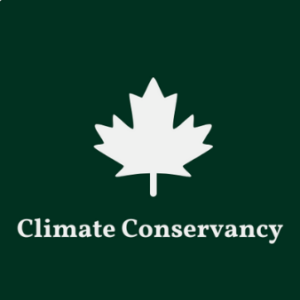



Youth Manifesto for Systemic Transformation in Textiles
https://yeenet.eu/wp-content/uploads/2024/02/position.png 250 250 Eva Kloudová https://yeenet.eu/wp-content/uploads/2018/11/logo-yee-728x1030.png Eva Kloudová2024-11-14 12:50:442024-11-14 13:00:02Youth Manifesto for Systemic Transformation in Textiles
1. Mitigation
Position
If we hope to avoid the worst consequences of the climate crisis and protect the most vulnerable from consequences beyond finance and adaptation capabilities, mitigation needs to return to the centre stage of the UNFCCC process in order to keep global warming under 1.5°C. This means that the Sharm el-Sheikh mitigation ambition and implementation work programme needs to be strengthened to enable it to deliver on substantive outcomes in line with the mitigation relevant sections 20-42 of last year’s GST Decision 1/CMA.5 through technical dialogues and partnerships. It also means that all countries need to submit updated NDCs by early 2025 in line with the 1.5° target, including concrete roadmaps towards an implementation of 28/CMA.5.
Strategic Demands
- Sharm el-Sheikh Work Programme: We call on parties to review and improve the modalities of the Sharm el-Sheikh mitigation ambition and implementation work programme so as to guarantee that the implementation and continuation of the programme results in substantive outcomes on the decisions reached on mitigation action under 28/CMA.5, including the tripling of renewables, the doubling of the rate of energy efficiency improvements and the transition away from fossil fuels in energy systems. This can be achieved inter alia by having technical dialogues focused on sub-sections of 28/CMA.5, enabling funded mitigation action partnerships and placing high-level political messages on mitigation in the annual report and CMA decision at each COP session.
- Nationally Determined Contributions: we urge Parties to submit updated NDCs which are aligned with CMA.5 and with the 1.5°C degree goal of the Paris Agreement. The NDCs should include economy-wide reduction targets that cover all GHGs and sectors, aim for net zero latest by 2050, 2040 for industrialised economies, and are underpinned by concrete roadmaps for the implementation of 28/CMA.5.
- EU NDC: As Europeans, we specifically urge the EU and its member states to commit to an ambitious new EU NDC in line with the 1,5 degree temperature limit and aiming for net zero by 2040 to be developed in collaboration with civil society and especially youth, to be announced before SB62 in 2025. This updated NDC shall also include a roadmap for 28/CMA.5, which could become a reference point for others to do the same.
- Nature-based solutions: we urge Parties to develop nature-based solutions for national action plans and emphasise ecosystem restoration and conservation. Hereby, industrialised countries need to support the Global South. Safeguards to secure the achievement of climate and biodiversity benefits, in particular strengthening resilience, in the implementation of nature-based solutions for mitigation should be promoted and prioritised. These nature-based solutions should be implemented without compromising the diversity of ecosystems, including marine, forest and urban areas.
- Green skills: we ask Parties to commit to support and fund the development of green skills for young people, so as to place them at the centre of the just transition.
- We furthermore call for an improvement regarding the accessibility of funds and technologies to grassroots community projects on mitigation, working on patents and other barriers to transfer.
- Phase out fossil fuels: We call for the EU to be at the forefront of a global movement to phase out fossil fuels, without caveats such as “unabated” fossil fuel phaseouts. This means committing to an end of domestic use of coal by 2030, fossil gas by 2035, and oil by 2040. In line with 28/CMA.5, the goal of tripling renewable energy and doubling energy efficiency improvement rates globally needs to be reached as quickly as possible. To implement this, we urge the EU, its member states and other European nations to:
- ○ shift fossil fuel subsidies to renewable energy by 2030 at the latest;
- ○ endorse the Fossil Fuel Non-Proliferation Treaty (FFNPT) and encourage other countries to also sign; and
- ○ commit to a time-bound phase-out of fossil fuels.
- Plants-based food systems: We call for a transition towards plant-based food systems supported by government subsidies and investment, emphasising the significant mitigation benefits of sustainable food reform in the light of the climate crisis – given that our global food system accounts for around one-third of GHG emissions – and recognising the need to tackle global food insecurity, environmental degradation, antibiotic resistance, and zoonotic diseases. In line with ProVeg International’s mission, we urge Parties to commit to replacing 50% of animal-based products with plant-based and cultivated foods by 2040.
2. Adaptation
Position
Adaptation measures must be prioritised alongside mitigation efforts, recognising both adaptation and mitigation as necessary in the climate actions of all member states to the UNFCCC. Given the urgency of climate impacts, especially in certain regions, it is essential to establish a differentiated adaptation regime that responds to specific local needs. We urge policymakers to reflect this equal prioritisation, ensuring adaptation receives commensurate attention, funding, and implementation focus alongside mitigation strategies.
Strategic Demands
- Progress under the UAE-Belém Work Programme with increased Specificity and Process Clarity: at COP29, Parties must collaborate to establish a coherent approach to achieve significant progress in the UAE-Belém work programme’s second year. Enhanced dialogue between negotiators and technical experts is essential to strengthen this workstream. Given the limited time at COP29 and over 5,000 adaptation indicators from various actors, we urge a streamlined approach to enable meaningful engagement and results.
- Means of Implementation (MoI): indicators under the Means of Implementation (MoI) need clear linkages to measurable targets, which currently remain a gap.
- New Collective Quantified Goal (NCQG) Alignment: we advocate for alignment and integration between NCQG discussions and the UAE-Belém work programme’s methodologies. The NCQG must also consider adaptation’s evolving needs.
- Grants-based and locally appropriate adaptation finance: funding for adaptation needs to be grants-based, and locally appropriate and must prioritise the countries and communities that are most in need. This should be accomplished by improving access to funds for grassroots community projects with a long-term focus. Additionally, it should include advancements in technologies and best practices, as well as the removal of barriers like patents to ensure equitable technology transfer.
- Adaptation Fund: The 2023 fundraising campaign for the Adaptation Fund is likely to fall short of its expected $300 million for the second year in a row. This fund plays a vital role in directly supporting marginalised communities most impacted by climate change (MAPA). COP29 must prevent further funding deficits and ensure that the Adaptation Fund remains well-resourced to support its project portfolio and long-term sustainability.
- Support to National Adaptation Plans (NAPs): we call for robust technical and financial support for the development and transparent monitoring of National Adaptation Plans. NAPs should integrate disaster risk management strategies that protect natural ecosystems and prioritise stakeholder engagement, especially in ecosystem-based adaptation.
- Adaptation in Nationally Determined Contributions (NDCs): countries, particularly in the Global North, must integrate adaptation and loss and damage more comprehensively into their NDCs. While many developing countries have included adaptation elements, stronger commitments are required globally for coherent and balanced climate action.
- Inclusive, locally-led adaptation: adaptation projects must meaningfully involve local communities, ensuring fair wages, capacity building, and access to advanced technologies. Special attention must be given to developing countries and vulnerable populations, ensuring that adaptation builds local resilience and enhances livelihoods.
- Ecosystem and community-based resilience: all adaptation initiatives should focus on creating green spaces, improving air quality, enhancing sustainable transportation options, and ensuring access to clean water and nutritious food. These efforts not only build resilience to climate impacts but also contribute to overall community well-being and social cohesion. We call for significantly increased investment in clean energy infrastructure, sustainable transportation, and ecosystem restoration, recognising these as investments in future generations’ well-being.
- Disaggregated data: we urge the use of age-, sex-, and disability-disaggregated data, along with child- and youth-specific indicators, in tracking adaptation outcomes under the UAE-Belem Work Programme. Experts must consider the unique needs of the most affected groups in formulating adaptation indicators.
- Climate mobility: National Adaptation Plans (NAPs) must recognise refugees from climate-vulnerable countries and prioritise climate-induced mobility, providing necessary protection and support for those displaced by climate impacts.
3. Loss and Damage
Position
There is a duty, particularly in the Global North and Parties in a position to do so, such as the EU, to provide adequate compensation for loss and damage to the most affected and vulnerable countries and communities. Funding for Loss and Damage initiatives should be adequate, equitable, additional and predictable, with a needs-based, rights-based and grant-based approach.
Strategic Demands
- We urge Parties to establish a third pillar for Loss and Damage in Climate Finance – that is, to include Loss and Damage in the New Collective Quantified Goal (NCQG), including in the form of a (regularly reviewed and adjusted) sub-goal expressed exclusively as grants.
- High-income countries, historical emitters and Parties in a position to do so must pledge new contributions to the Loss and Damage Fund. These should truly reflect their responsibility for the climate crisis and their economic capabilities to contribute and need to be new and additional to pre-existing funding under climate finance, humanitarian and developing funding.
- Financial instruments used to provide climate finance must not exacerbate the debt burdens of developing nations. The quality of climate finance is as critical as its quantity.
- We encourage Parties to establish mechanisms to address systemic information gaps through qualitative and quantitative indicators of non-economic and economic impacts.
- We recommend that Parties commit to ensuring transparency in the allocation of resources through mechanisms and robust monitoring.
- We urge Parties to recommend the establishment of mapping and data collection systems to analyse non-economic losses and damages in order to develop action plans at the country level.
- The Loss and Damage Fund shall be operationalised according to the gender and human rights-based approach, giving adequate attention to economic and non-economic losses and damages.
- Issue guidance to the FRLD board to ensure adequate capitalisation of the Fund, access to funding for and meaningful participation in decision-making of Indigenous Peoples, frontline communities, local CSOs and groups experiencing marginalisation.
- Ensure rapid, grant-based capitalisation of the Fund to respond to economic and non-economic loss and damage, based on public finance, rights-based, regular, predictable, needs-driven, structured and accessible to vulnerable groups and communities such as youth and indigenous peoples.
- We urge Parties to agree on starting to disburse the Loss and Damage Fund by Early 2025.
- We call Parties to establish national focal points for loss and damage (LD) to improve coordination.
4. Climate Finance and NCQG
Position
Climate finance is central to meaningful action at COP29, particularly in advancing climate adaptation, mitigation, and addressing Loss and Damage. It is the key issue at the conference, as critical initiatives around the world remain underfunded, and developed countries have consistently failed to fulfil their commitments to provide sufficient financial resources to support vulnerable nations.
The current global financial system has fallen short in mobilising the necessary resources to tackle the climate crisis. In light of Article 2.1(c) of the Paris Agreement, which calls for a transformation of the financial system to build resilient and sustainable economies, we assert that scaling up the New Collective Quantified Goal (NCQG) is essential to addressing this imbalance. It is a collective responsibility to ensure that those who have contributed most to climate change—both in the public and private sectors—contribute accordingly.
To achieve this, climate finance must prioritise grants over loans, leverage public funding, and hold polluting industries accountable through taxes on their environmental impact. This approach will ensure that funding is more accessible and effective, driving the much-needed climate action to mitigate future risks and build resilient communities. It is of paramount importance to prevent interest rates that place most affected countries into heavier debt.
Additional sources of finance should be considered in this respect, most importantly, phasing out fossil fuel subsidies and their reallocation to just transition efforts, but also wealth tax, tax on financial transactions, windfall profit tax on fossil fuel companies, carbon levy on private jets and yachts, etc.
Strategic Demands
- Grants over loans: we demand the NCQG to prioritise grants over loans for climate finance, ensuring that public funds form the core of contributions to avoid deepening debt crises in most vulnerable and developing countries.
- Financing from polluters: climate finance contributions must be supplemented by taxes on polluting industries (such as fossil fuel companies), luxury goods, and services like private jets. Corporations must be held accountable through carbon taxes and special levies to fund climate action.
- Tax Justice, make polluters pay: we call for the recognition of the principles of tax justice and ‘polluter pays’ within the frame of equity and common but differentiated responsibilities and respective capacities (CBDR-RC). Developed countries should take the lead in reorienting their existing public finances to do no harm, and pursuing tax justice for new sources to be able to provide new and additional climate finance under the NCQG.
- $5 trillion climate debt repayment: the Global North must commit to a minimum $5 trillion annual climate debt repayment package, starting with at least $1 trillion in grants each year from COP29 onwards to cover adaptation, loss and damage, and a just transition. Private investments must not substitute this obligation.
- Direct access: funding must be directly accessible to vulnerable communities, cutting out intermediaries and simplifying processes, with special attention to local leaders and youth (both organised and unorganised entities) to empower them to lead green projects.
- Transparent and equitable finance: the NCQG must ensure transparent, additional funding for mitigation, adaptation, and Loss and Damage, with developed countries meeting existing commitments before broadening the donor base.
- The decision to adopt the NCQG must recognise the importance of funding across multilateral environmental agreements, including for the Kunming-Montreal Global Biodiversity Framework and the Global Framework on Chemicals;
- Youth projects: we urge to facilitate access to finance for youth-led sustainable projects, including from multilateral institutions and funds as well as national resources to support NDC-aligned local projects.
5. Climate Justice
Position
Nationally Determined Contributions (NDCs) and long-term climate strategies must integrate just transition principles and social investments, including infrastructure, education, skills development, and social protection measures.
COP29 must prioritise a fair and inclusive approach, recognizing that communities most affected by the climate crisis are essential actors, not just victims, in addressing its impacts
Strategic Demands
We call for recognition and support of those facing the worst impacts:
- EU support in the context of just transition: a robust inclusivity approach is crucial to enabling equitable climate solutions. The EU governments should ensure that climate policies are increasingly fair and inclusive to recognise evolving changes that arise as a result of the climate crisis. Particular attention shall be devoted to young people transitioning from education to work, workers, minority groups, and low-income populations.
- ○ Just transition: European governments should implement support and retraining programs for workers transitioning out of fossil fuel industries, ensuring they are not disadvantaged during the renewable energy transition.. This is essential to maintaining fairness and social stability in climate policy.
- ○ Support to low-income populations: European governments must implement climate solutions that avoid obligating low-income populations to disproportionately burdensome responsibilities.
- Engagement with the Global South: European governments should engage directly with minority and vulnerable communities in the Global South, ensuring their voices are heard in both national climate plans and at COP29. The Global South’s participation is vital in crafting equitable climate solutions.
- Inclusive participation
- ○ At the national level: countries should involve a diversity of groups, including youth, women, Indigenous Peoples, and people with disabilities in the development and implementation of national climate strategies. This should be done in close collaboration with the groups themselves, giving them the means to influence throughout the whole process, with a focus on empowering marginalised groups.
- ○ In UNFCCC processes: we urge the UNFCCC to ensure meaningful and inclusive participation in negotiations and decision-making processes. This includes governments and corporations providing equal opportunities and ensuring that people from diverse socioeconomic and geographical backgrounds are heard, including youth, women, Indigenous People, and people with disabilities. We recognise that all voices must count equally to achieve equitable and effective climate solutions.
- International Court of Justice Advisory Opinion:
- ○ We urge States participating in the International Court of Justice Advisory Opinion (ICJAO) on Climate Change oral proceedings to include witness testimonies from youth, indigenous communities and other marginalised groups in their oral statements. Their lived experiences are critical in shaping climate justice outcomes.
- ○ We invite States to address the importance of intergenerational equity and respect for human rights in the face of climate change during their oral statements at the ICJ. We also encourage them to mention citizen-led initiatives for the ICJAO campaign, such as the witness stands and the ICJAO petition.
6. Action for Climate Empowerment (ACE)
Position
In line with Action 55 of the UN Pact for the Future, we call on Parties to provide meaningful opportunities for the participation of non-state actors in the UNFCCC negotiations, including young people, local communities, women, trade unions, indigenous people, academia, etc. and ensure that the outcomes of these deliberations are feeding into the negotiations. We commend the recognition of youth in the UNFCCC process, including through the establishment of the Youth and Children Constituency (YOUNGO), the acknowledgement of the need to ensure meaningful youth participation, and representation in the Glasgow Climate Pact and Glasgow work programme on Action for Climate Empowerment as well as the establishment of the Children and Youth Pavilion and Youth Climate Champion.
However, many Parties have still not involved youth as full stakeholders in the process both at the national and international levels. Youth inclusion is a two-way process, which requires both sides to develop the skills and willingness to collaborate meaningfully.
Strategic Demands
- We call on Parties to involve youth as full stakeholders in national and international climate negotiations. This includes:
- ○ Mandatory youth inclusion in Party delegations.
- ○ Pre-sessional and on-site youth consultations.
- ○ Youth-led forums for dialogue with Parties, as set out in the Glasgow Work Programme on ACE.
- ○ Enhanced opportunities for youth to participate in technical dialogues and provide interventions.
- ○ Sponsorship and support for youth participation in UNFCCC processes.
- We urge Parties to not only focus on building the capacity of youth to engage in political processes but also to develop their own capacity to effectively collaborate with youth and vulnerable groups. This should include practical training for Party negotiators on inclusive decision-making processes.
- Mainstream ACE principles across workstreams: ACE principles—climate education, training, public awareness, and public participation—must be integrated across all UNFCCC workstreams. We demand that the NCQG agreement allocate specific finance for ACE to uphold the procedural rights of Environmental and Human Rights Defenders (ERHRDs) in climate action.
7. Civic Space, Human Rights and Conflict of Interest
Strategic Demands
- There is no climate justice without human rights:
- The EU must lead in safeguarding human rights in climate processes while ensuring meaningful participation from civil society and frontline communities.
- Local activists must be protected and allowed safe participation in key climate fora such as COPs.
- Civic space:
- The UNFCCC and Azerbaijani authorities must facilitate inclusive participation at COP29 by ensuring access, freedom of expression, and peaceful protest rights. Azerbaijan should guarantee civic space and establish a system for responding to threats to human rights during the event.
- Conflict of interest:
- We call on the EU to push for a robust UNFCCC Accountability Framework to define and regulate conflicts of interest, to prevent undue corporate influence and ensure transparency in participant admissions.
- The UNFCCC Secretariat should stop inviting industry associations linked to polluting interests and strengthen guidelines to prevent the misuse of the COP brand by host countries.
- The Host Country Agreement as well as any contracts involving corporations and organisations granted (Green Zone) partner or exhibitor status should be published on the UNFCCC website.
8. Planetary Boundaries
Position
Only three planetary boundaries remain within the “safe operating space”: ocean acidification (which is already approaching its critical threshold), atmospheric aerosol loading, and stratospheric ozone depletion.
All other boundaries – such as climate change, biosphere integrity (biodiversity loss), land-system change, freshwater change, and biogeochemical flows – have been surpassed.
The interconnected nature of these planetary boundaries means that addressing individual challenges, like limiting global warming to 1.5°C, demands a collective and integrated approach. Tackling one issue without considering others risks destabilising the entire Earth system.
Strategic Demands
- The European Union must take bold action to strengthen its Nature Restoration Law, increasing its ambitions, and enforcing legally binding targets for restoring degraded ecosystems and halting biodiversity loss. This includes scaling up nature-based solutions, protecting critical habitats, and integrating biodiversity goals into all sectors of the economy. As past experience has shown, compromise in this area is not an option, as the sustainable growth of economies and the well-being of citizens are intrinsically linked to a healthy, thriving natural environment.
- The private sector must significantly scale up its financial and structural commitments to biodiversity protection, as the majority of current funding comes from governments, which are providing insufficient resources to meet the targets set in the Kunming-Montreal Global Biodiversity Framework. Different types of instruments can be considered to improve investment in nature and biodiversity, like the debt-for-nature swap and green bonds.
- Furthermore, governments and institutions should focus on the strengthening of Multilateral Development Banks transforming them into climate and nature banks.
- The European Union should not delay the EU deforestation-free products regulation (EUDR), a flagship achievement of the Green Deal.
9. Health
Position
The climate crisis poses a significant threat to global health and well-being in the 21st century. As young Europeans, we are deeply concerned about the direct and indirect impacts of climate change on health, social systems, and overall quality of life.
Strategic Demands
To address these interconnected issues, we call on European Governments to include the following in their positions in the UNFCCC:
- Recognise the profound and interconnected impacts of the climate crisis on health, social systems, and well-being in their verbal and written statements in the UNFCCC context.
- Integrate climate considerations into all health policies and planning processes.
- Strengthen healthcare infrastructure to withstand climate-related disruptions.
- Increase investment in research on climate-health impacts and effective adaptation strategies, prioritising the needs of vulnerable populations in climate-health action plans.
- Promote sustainable practices in healthcare and other sectors to mitigate climate change.
- Enhance education and awareness about climate-health links, particularly among youth.
- Ensure youth representation in climate-health policy-making processes to address the long-term nature of these challenges.
Help us spread the word! Share this statement
Signatories
This position paper was developed within the Network of European Youth NGOs for Climate Action (NEYCA).












European Youth Demands for COP29
https://yeenet.eu/wp-content/uploads/2024/11/neyca.png 512 462 Eva Kloudová https://yeenet.eu/wp-content/uploads/2018/11/logo-yee-728x1030.png Eva Kloudová2024-11-07 11:37:172024-11-08 11:50:17European Youth Demands for COP29Creatures of the dark
While nighttime activities are popular with humans for a few nights a year, some creatures keep it creepy all year round.
- October 31, 2024

Written by

Ashton Melfor
Contents

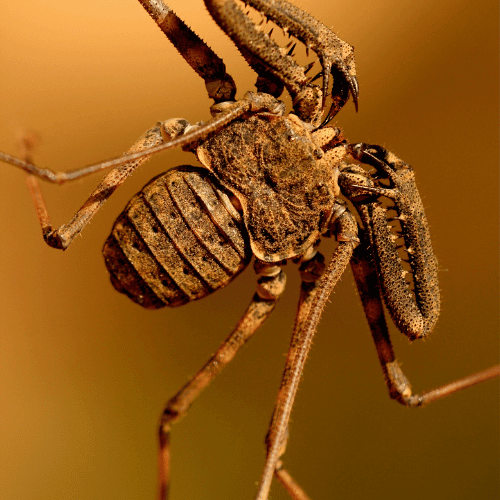
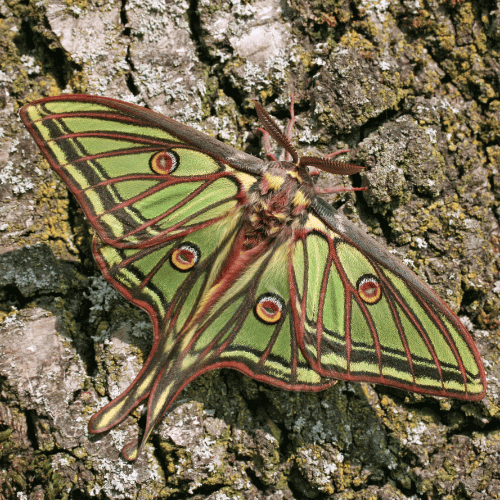



Share this article
For many people, Halloween is the one time of the year when being active at night is a must, whether to remember those who have passed or to celebrate the macabre and supernatural.
While nighttime activities like trick-or-treating, themed parties, and haunted house visits are popular with humans for a few nights a year, some creatures keep it creepy all year round.
Why choose to be active at night?
For years, scientists have studied the advantages of nocturnality. A recent study now suggests that activity in darkness provides a survival advantage. This research points to four key survival benefits that helped nocturnal creatures outlast their daytime counterparts, especially during mass extinctions.
Let’s meet a few of these eerie night dwellers!
Adorable but deadly
We’ll start with arguably the cutest animal on this list. The Loris. As the common name, Slow Loris, for the species in the genus Nycticebus suggests, these beady-eyed mammals are not the fastest. But don’t be fooled by their harmless appearance as Lorises are the only venomous primates on the planet.
These dwellers of the night are specially adapted to life in the dark. Having large eyes increases their ability to capture light, improving night vision. When threatened, lorises use their bare patch that secretes oil, mixing it with saliva to create venom. Despite being really slow, these animals are skilled hunters using their slow pace to sneak up on unsuspecting prey. Truly giving new meaning to the saying “silent but deadly”.
A true creepy crawler
Now we move to a true creepy crawler, the whip spider. Despite what the name may suggest, these are not true spiders. Unlike true spiders in the order Araneae, whip spiders belong to the order Amblypygi. (See our previous article on why neither are insects!)
Whip spiders are, like their namesake, predators, hunting all kinds of arthropods. But unlike spiders, they do not possess silk glands for making webs. For this reason, they have developed an active hunting strategy. Using their modified legs, they sense prey items, once found they sprint towards them and grab the prey item with their spikey pedipalps. Witnessing this in action is sure to create an unsettling feeling in anyone. Whip spiders are found primarily in tropical to subtropical climates. They prefer moist dark places coming out to hunt when most of us are asleep.
Endangered Beauty
For the third and final animal on our list, we stay in the realm of arthropods. Ever heard of the moon moth? Saturnia isabellae or Spanish moon moth is a moth in the large family called Saturniidae. Like most moths the Spanish moon moth flies during the night, searching for a partner or places to lay their eggs.
As the name suggests it is found in Spain, specifically the Pyrenees. What makes this species so special is that it lives in a relict population.
What is a relict (refuge) population?
A relict population is a remnant group of organisms that has survived in a restricted area after once being more widespread and diverse, often due to physical or climatic changes in its habitat.
During the last ice age, this species was more abundant, being well-adapted to the cold. However, as the climate changed it has been confined to all but the coldest parts of the Pyrenees. There its caterpillars feed on pine needles.
Having a restricted and fragmented range and with anthropogenic climate change further threatening its refuge habitat, means that this species is strictly protected under the EU Habitats directive.
So, this Halloween, when you’re out trick-or-treating or visiting a haunted house, remember at sundown all manner of mysterious creatures come alive. Keep your eyes peeled and who knows what you may come across.
More articles about biodiversity
Creatures of the dark
https://yeenet.eu/wp-content/uploads/2024/10/haloween-post.png 540 540 YEE https://yeenet.eu/wp-content/uploads/2018/11/logo-yee-728x1030.png YEE2024-10-31 08:14:042024-10-31 08:37:08Creatures of the dark
The declaration by the United Nations to consider this decade, the UN decade of ecosystem restoration, acknowledges decades of research urging us to take action to prevent further degradation of our natural world and restore what has been degraded. Although there is still a long way to go in achieving this goal, COP 16 must be a step towards finally taking action to restore ecosystems.
We recognise that biodiversity loss and ecosystem degradation disproportionately affect the most vulnerable communities, particularly those already marginalised by systemic inequalities, such as Indigenous Peoples, local communities, women, youth, people with disabilities, and those living in poverty. Biodiversity policies must therefore prioritise equity, social justice, and the inclusion of these groups in decision-making processes, as their unique knowledge and perspectives are critical for developing effective solutions.
As young people in Europe, we expect European countries at COP 16 of the Convention on Biological Diversity (CBD) to prioritise bold, actionable solutions that address the ongoing catastrophic global biodiversity loss and recognise our continent’s crucial role in addressing the crisis. We want concrete commitments to protect and restore ecosystems, ensure sustainable use of natural resources, and safeguard the rights of Indigenous communities. Our present and future depend on a healthy planet, and we expect nothing short of world leaders acting swiftly to implement the Global Biodiversity Framework, hold corporations accountable, and invest in nature-based solutions; all this underpinned by principles of solidarity and leaving none behind.
As for concrete text proposals, we support the policy paper by the Global Youth Biodiversity Network and the Opinion by the European Economic and Social Committee NAT/926 ‘A comprehensive strategy for biodiversity at COP16: bringing all sectors together for a common goal’. Still, as European Youth, we want to emphasise the following aspects:
We believe that COP16 decisions need to entail:
Inclusive and Equitable Biodiversity Strategies in NBSAPs
Global targets are translated into national implementation through the NBSAPs, which must be well-designed (i.e. whole-of-society and whole-of-government approach) and supported by a strong monitoring framework. However, the design of NBSAP should not delay biodiversity action: we have plenty of ready and proven solutions to tackle biodiversity loss that need to be accelerated. The European Union (EU) and its Member States should align their NBSAPs to the ambition of the EU Biodiversity Strategy, which, with its legislation like the Nature Restoration Law and the Deforestation Law, are already urging action.
As a region with high capabilities to do so, European countries should ambitiously support wildlife comeback and coexistence in their own continent, and have a duty to restore lost habitat and species populations besides protecting the few that are left.
When designing and implementing NBSAPs, we believe that the targets that differ most from former Aichi targets need to be especially considered, to make sure the NBSAPs address them properly. In particular, this includes Targets 22 and 23, which focus on critical areas of inclusivity. Target 22 emphasises the full and equitable participation of Indigenous Peoples, local communities, women, and youth while ensuring their rights to lands, territories, and resources are respected. Target 23 calls for gender equality and the empowerment of women and girls in biodiversity decision-making and leadership. We believe that these targets are essential to achieve a truly inclusive and effective biodiversity strategy.
Furthermore, NBSAPs must be developed with a focus on marginalised and vulnerable populations that are often left out of national environmental policies, ensuring their meaningful inclusion from planning to implementation. This includes securing their rights to ecosystems they depend on for their livelihoods and culture, while also protecting them from displacement and exploitation by large-scale projects under the guise of conservation.
Significant gaps remain in the indicators proposed by the Ad Hoc Technical Expert Group (AHTEG), particularly regarding youth involvement. EU countries can set a good example by including youth-specific indicators. This would be at the very least the disaggregation of indicators by age where relevant. However, EU countries are invited to adopt more ambitious indicators monitoring the key role of the youth and more stakeholders in achieving the CBD targets.
Finally, the EU should respect the principle of intergenerational equity prescribed by the GBF and include youth from an early stage of the process, as beneficiaries, partners and leaders,
Resource mobilisation & Financial Mechanisms
We urge the EU to be constructive and genuinely ambitious during the Resource Mobilisation and Financial Mechanisms discussion. These resources must come from different sources, including ODA, the domestic as well as the private sector, considering different capabilities and responsibilities, and applying the polluter-pays principle to ensure a fair share of burden distribution.
While significantly increasing biodiversity funding is essential, we caution against false solutions and greenwashing, which allow business as usual to continue without addressing the root causes of biodiversity loss.
We urge decision-makers to phase out investments dangerous to biodiversity and perverse incentives (such as environmentally harmful subsidies). We also want to emphasise that resources need to be redirected towards those working on the ground to achieve the Convention on Biological Diversity (CBD) goals – especially Indigenous Peoples, local communities, women, and youth. Any financial mechanism must explicitly ensure that a significant portion of the funds reach these communities directly, bypassing bureaucratic obstacles, and empowering them to lead restoration and conservation efforts themselves.
Ensuring equitable benefit-sharing with Indigenous Peoples and local communities is crucial, as these groups are often the custodians of biodiversity. COP16 should demand transparent, accessible pathways for these communities to gain their fair share of benefits from the use of genetic resources, ensuring that no group is left out or exploited.
Empathy and fairness in biodiversity policy
We call for empathy in biodiversity policy-making. Empathy means improving the lives of all beings —human and non-human— while minimising harm. By prioritising empathy as a value, we can foster stronger commitments for both our present and future. Furthermore, we urge the EU to integrate sufficiency; ensuring that resources are used in ways that meet essential needs without overexploitation, promoting sustainability and fairness for all species and ecosystems
COP16 must also strengthen the implementation of the Nagoya Protocol on Access and Benefit-Sharing (ABS) and ensure fair technology exchange, particularly in the area of digital sequence information (DSI) technologies.
Rio Convention Synergies
Biodiversity conservation, climate action and the fight against desertification, among others, should go hand in hand. We need the synergies on environmental action to be recognised and to be reflected in all three Rio Conventions. This also entails the recognition that actions for one Rio Convention might have negative impacts on the other ones, and should thus be avoided. The Rio Conventions should therefore design their implementation measures in such a way that it provides positive environmental effects without jeopardising the objectives of another convention.
European youth calls for action
We believe the COP16 represents a major opportunity to secure a sustainable and healthy future for future generations by exemplary actions at present. The future generations do not rightfully own the burden to deal with an even further deteriorated environment, loss of species and more severe climate change processes and events which today can be confronted.
This youth-led united position recalls the concerns surrounding the biodiversity loss crisis, the needs of the most vulnerable and the imperative need for proportional measures that correspond to the magnitude of the problem.
Help us spread the word! Share this statement
Signatories







Learn more about the Convention on Biological Diversity
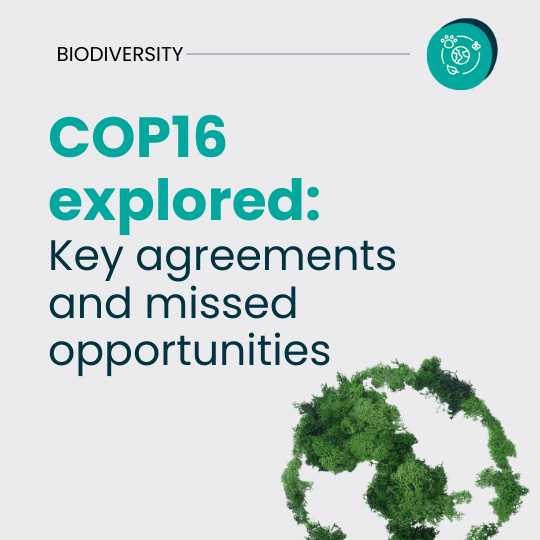
The conclusion of the 16th meeting of the Conference of Parties to the Convention on Biological Diversity (CBD COP16) marks a pivotal

As young people in Europe, we expect European countries at COP 16 of the Convention on Biological Diversity (CBD) to prioritise bold,
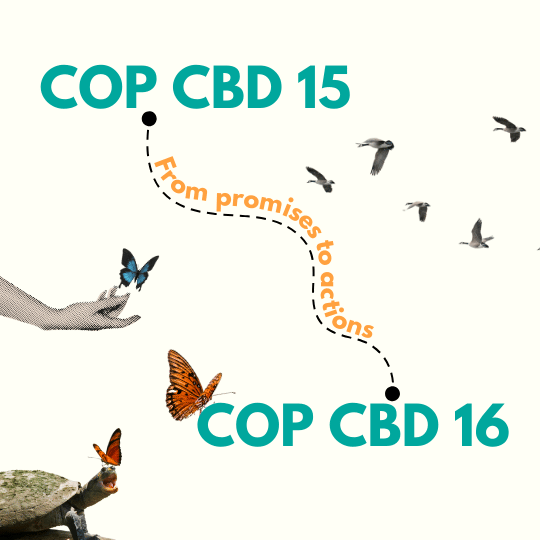
With the next conference of the parties to the convention on biological diversity (COP 16) right around the corner, let’s look back
European Youth statement ahead of COP 16
https://yeenet.eu/wp-content/uploads/2024/02/position.png 250 250 Eva Kloudová https://yeenet.eu/wp-content/uploads/2018/11/logo-yee-728x1030.png Eva Kloudová2024-10-17 15:19:182024-10-18 15:44:51European Youth statement ahead of COP 16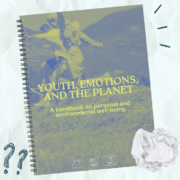
Youth, Emotions, and the Planet
Share This Toolkit
The climate crisis can be overwhelming, but your emotions are powerful tools for change. Youth, Emotions, and the Planet provides thoughtful guidance on embracing and managing these emotions, empowering you to be a proactive force in the fight for our planet, whilst taking care of yourself.
Whether you’re already active in environmental advocacy or just starting your journey, this handbook offers the emotional support and practical advice you need to make a difference.
This handbook covers a wide range of topics, including:
-
How to Understand Your Eco-Emotions?
Explore emotions like eco-anxiety, grief, and hope, and how they shape your relationship with the environment.
-
How Can You Build Emotional Resilience?
Discover practical ways to cope with climate-related emotions and turn them into positive energy.
-
How Can You Empower Your Climate Activism?
Learn how to harness your emotions to drive meaningful environmental change and contribute to a sustainable future.
Youth, Emotions, and the Planet
https://yeenet.eu/wp-content/uploads/2024/10/Eco-emotions-handbook-featured-image.png 705 705 Eva Kloudová https://yeenet.eu/wp-content/uploads/2018/11/logo-yee-728x1030.png Eva Kloudová2024-10-17 11:16:182024-10-30 14:01:32Youth, Emotions, and the PlanetOur mission
 YEE aims to unite environmental youth non-profit organisations in Europe in order to enhance international cooperation, increase knowledge about the climate crisis, raise awareness of environmental problems and to strengthen participation of youth in environmental decision-making.
YEE aims to unite environmental youth non-profit organisations in Europe in order to enhance international cooperation, increase knowledge about the climate crisis, raise awareness of environmental problems and to strengthen participation of youth in environmental decision-making.
Get in touch
Vinohradská 2165/48
120 00 Praha 2 – Vinohrady
Czech Republic
E-mail: yee@yeenet.eu


Financially supported by the European Youth Foundation of the Council of Europe. The views expressed do not necessarily reflect the official position of the Council of Europe




